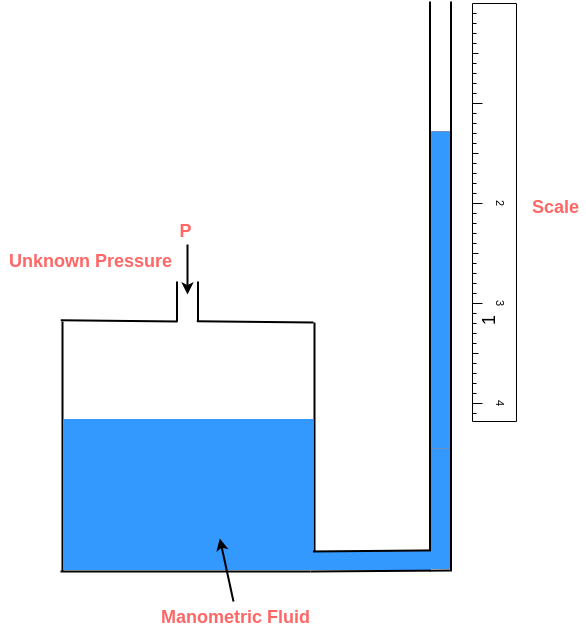A pressure transducer is a device that converts pressure into an analog electrical signal.
Measuring Pressure
Pressure is measured in three forms.
- Absolute pressure is a pressure that is relative to the zero pressure in a vacuum.
- Gage pressure is the pressure relative to atmospheric pressure.
- Differential pressure is the difference in pressure at two different points of the system.
Types of Pressure Transducers
Resistance Type Transducer
Transducer whose resistance varies with pressure applied is called resistance type pressure transducers.
Eg: Strain Gauges.
Read more: Resistance Type Transducers
Read more: Resistive strain gauges
Inductance Type Transducer
Pressure can also be measured using transducers like LVDT.
Read more: Inductive Transducers
Capacitance Type Transducer
Transducers whose capacitance value changes with applied pressure is called capacitance transducers. Capacitance transducers are used for measuring very low pressures.
Read more: Capacitance Transducers
Piezoelectric Transducers
Transducers use piezoelectric sensing elements for measuring pressure is called piezoelectric transducers.
Manometer
There are many devices for measuring pressure. A manometer is an instrument that uses a column of liquid to measure pressure. The measuring is done by balancing the fluid in a column against another column of fluid of known specific gravity. Manometers are used for measuring low pressure, especially in hydraulic laboratories.
Manometers can be classified as
- Simple manometer
- U tube manometer
- Well type manometer
- Inclined manometer
- Barometer
U Tube Manometer

A manometer in which the manometric fluid is filled in a U shaped tube is called a U-tube manometer. Water and mercury are commonly used manometric fluids.
An unknown pressure P1 is applied in one of the legs of the tube. It causes a movement of the manometric fluid in the tube to the other leg which is kept open. The movement of the fluid is stopped when the height is sufficient to balance the pressure exerted by the column of liquid. if P2 is the atmospheric pressure then h is a direct measurement of P1 and is given by,
Then,
Where ρ is the density of manometric fluid and g is the acceleration due to gravity.
That is, the pressure applied can be measured by knowing the height of the column of the liquid and density of the liquid.
Well Type Manometer

A well-type manometer has a well of large crossectional area connected to a glass tube. Normally, mercury is used as the manometric fluid.
The unknown pressure P is applied to the well. This applied pressure causes the liquid level in the well to fall and the liquid in the tube to rise. A small change in the height of the well causes a large change in the liquid level of the tube. The difference in height can be measured using a scale that is calibrated in terms of pressure.
